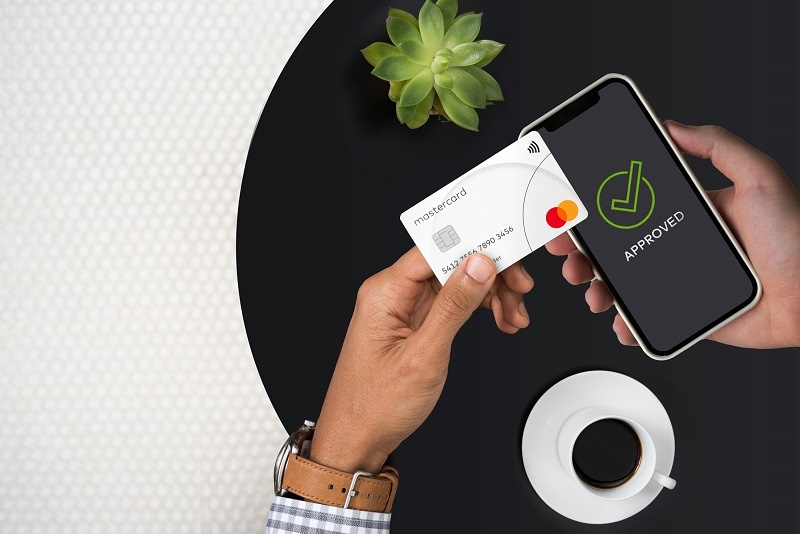The next frontier in delivering great customer experiences
 |
| Winnie Wong, country manager, Vietnam, Cambodia & Laos, Mastercard |
Digital-first lifestyles
When the pandemic started, both businesses and consumers were forced to increase the adoption and implementation of technology solutions, like e-commerce, digital wallets, and QR codes, to carry on with everyday life with minimum disruption. In fact, in a matter of only eight weeks, we have vaulted seven years forward in consumer digital channel adoption.
Technology played a crucial role in keeping many aspects of our lives going even during lockdowns or restricted movement.
- Stores, retailers, and F&B businesses have shifted to online ordering and delivery as their primary operation
- Banks have transitioned to remote sales and services, and at the same time launched new digital outreach so that customers can flexibly make payment arrangements using solutions
- Customers have made a lasting shift towards online shopping, mobile applications, contactless cards, biometric verification, and payments
And now, nearly six months into 2022, it is certain that this steady adoption of technology will continue to reinforce the importance of digital channels, tools, and devices in maintaining the connection worldwide and accelerating the need for consumer solutions that are touch-free, seamless, and digital-first.
The evolving expectations of today’s consumers in their contactless journey
The pandemic has driven significant changes in the way consumers shop, pay, and demand. More and more consumers in Asia-Pacific are moving towards digital means for their transaction needs. Enthusiasm for a broader range of payment technologies has also surged, as 94 per cent of people say they will consider using at least one emerging payment method, such as QR codes, digital or mobile wallets, instalment plans, cryptocurrencies, biometrics and others in 2022, indicating all signs that digital payments will continue to grow.
 |
| Mastercard Tap on Phone |
Consumers haven’t just adopted new payment technologies, but are making deliberate shifts based on considerations around necessity, convenience, personal safety, and especially security.
- Concerns about safety and security stay top of mind, as 79 per cent indicated they are willing to try new payment technologies if they perceived them to be safe, while 85 per cent want to make sure the payment options offered by merchants are secured.
- In addition, consumers are showing increasing concerns regarding data privacy, especially now that they are able to own and manage their own data. As business is built on loyalty, and loyalty itself on trust, unless online privacy and security are guaranteed, customers might simply take their businesses elsewhere.
Not only are customers today considerably more digital-aware, they are also more demanding in terms of their expectations for experiences.
Our global research shows a growing interest in rich and engaging experiences, either offline or online. After more than two years of social distancing and uncertainty, the pent-up desire to reach out and connect has been empowering people to seek out experiences that they have never tried before, and those that expand their horizons.
Whether that means getting in touch with a long-time passion in a new sense, or engaging with new places and cultures, grand scale or intimate, today, it is being able to explore new cultures, enhance knowledge and create meaningful connections that are top priorities. connected the world becomes, the easier it should be to connect with what matters most.
We are committed to creating “a world beyond cash”, in which no one is left behind. This vision continues to drive us forward in our effort to solve the “getting paid” challenge.
We are working with banking partners to enable consumers to scan a QR Code and pay using a Mastercard card conveniently. In the meantime, small merchants may benefit from providing “tap and go” contactless payments with a card or mobile device via our Soft POS solution.
This helps merchants to widen their acceptance net, giving them the flexibility to accept payments in and out of stores, as well as providing a better consumer experience.
Supporting small- and medium-sized enterprises will continue to be a priority for Mastercard in the years ahead. Through our wide range of partnerships worldwide, we are making strong efforts to create an environment that empowers small businesses to flourish and increase their access to the digital economy.
These include training curriculums that equip businesses with resources that guide them towards their digital transformation, help them tailor new payments strategy, engage with consumers and capture new revenue.
But it’s not just about digitalising. The utmost important lesson of the new age is to always stay close and connected with your consumers, understanding their needs and demands.
Tuning into what it is that they need will help you identify their goals and pain points. Once you have succeeded in providing a pleasant experience, you’re likely to earn more than a sale; you’ve found yourself a loyal customer.
While our technological solutions enable fast, simple, accessible and secured payments, Mastercard continues to leverage its global expertise in consumer understanding to help unlock new opportunities and priceless experiences, so that consumers can connect with their passion points that businesses can provide.
We believe that these behavioural changes are just getting started, and we can stay hopeful of a positive prospect for the digital economy in Asia, as well as a more comprehensive transition towards digital means of payment for consumers.
For businesses to thrive in such circumstances, an experience-centric, digital-first strategy that responds in real-time to consumers’ needs, and prioritises privacy, clarity and equality will be the next frontier in providing better customer experiences for today’s consumers.
What the stars mean:
★ Poor ★ ★ Promising ★★★ Good ★★★★ Very good ★★★★★ Exceptional
Related Contents
Latest News
More News
- Tax sector wraps up 2025 and sets priorities for next year (December 25, 2025 | 14:00)
- A tipping point for digital and hybrid wealth management in Vietnam (December 23, 2025 | 13:33)
- $250 million deal targets women-owned SMEs, sustainable agriculture (December 22, 2025 | 17:40)
- Stock market posts resilient 2025 performance (December 19, 2025 | 18:17)
- Citi Vietnam receives 2025 AmCham CSR recognition (December 19, 2025 | 16:35)
- As global green supply chain reshapes, will Vietnam be left behind? (December 19, 2025 | 08:00)
- Banks gear up for massive capital increases (December 18, 2025 | 17:04)
- Securing capital and efficiency for Vietnam’s 2026-2030 growth ambitions (December 17, 2025 | 10:00)
- Energy sector in need of blended finance mechanisms (December 17, 2025 | 09:00)
- Vietnam still has room to mobilise capital for sustainable growth (December 17, 2025 | 08:57)

 Tag:
Tag:





















 Mobile Version
Mobile Version